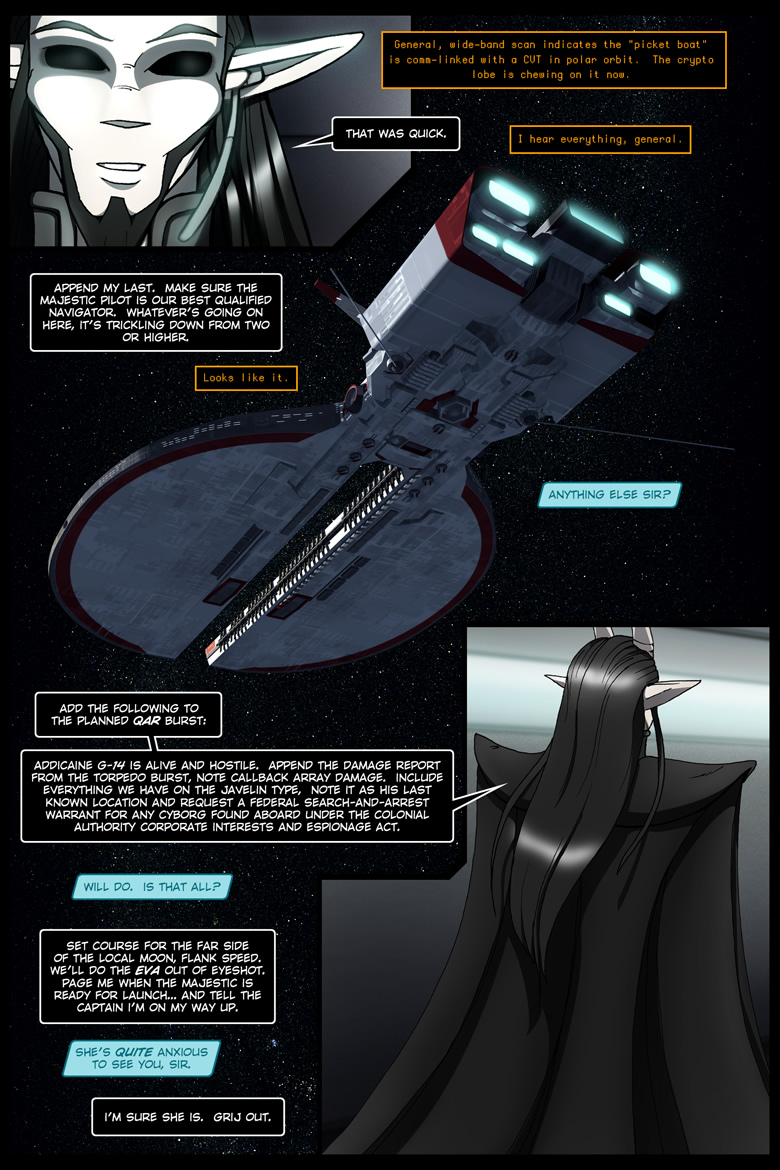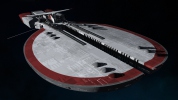So much type. Quotes look damned goofy in VT100.
I tried to keep roughly the same angle as the previous version. In this case, the moon is nowhere to be seen and earth is a sliver somewhere under Grij’s cape. While the Sabrosa has a high octane gravity drive, I don’t think it could hop from leo to lunar orbit in a matter of seconds, as it appeared to do in the previous edition. The ship is fast, but it’s not that fast – especially with one of the gravimetric differentiators damaged.
This boat, it’s a lemon.*
All glory to the Colonial Authority. Outside of this page it has no real bearing on The Dualist… but trust me when I tell you that it’s a major component of the greater story. Shades of books four, five and six here.
* Of course, if you look at the availability figures for high-end military hardware, and compare to equipment longevity in sci-fi, you’ll find that most sci-fi writers either handwave low-to-no downtime with “better engineering,” ignore it completely, or just don’t realize that your average fighter jet – and by extension anything more complicated than an M-16 – spends vastly more time in the maintenance bay than it does in the air. Space hardware is no different – look at the turnaround time on the shuttle, the assembly and prep time for a Soyuz, the maintenance issues with the ISS… the list goes on. The money obviously isn’t in engineering – it’s in supporting the results. You’d think that Heirotus – building and fielding its own equipment – would have higher standards, right? Well, they do. For production hardware. The HX-47 is a prototype, a testbed for technologies that once proven were then implemented in the type 48, which is what all of the engineering effort was/is focused on. It’s a one-off, and Heirotus is determined to get maximum value out of it. Even if that means pushing it until it breaks.
The upside of sailing aboard the space lemon – the crew has real world experience with all kinds of worst case scenarios.
Mastering notes, 2016.12.06 – Minor dialogue adjustments. Also, a correction – the “dark side” of the moon is now the “far side” of the moon.





